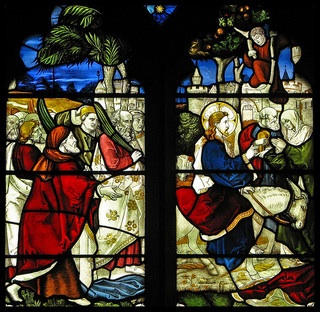Serving a New and Talented World
I’ve had the opportunity to attend many youth concerts in the last few years. I’ve noticed a remarkable difference from my school experiences.
Today’s young people have the ability to excel in skills beyond what was possible for all but the most motivated among those of us who were schooled 40-50 years ago.
They have constant exposure to the professional talent. We had the Mickey Mouse Club and the Ed Sullivan Show.
They have teaching tools that were unavailable to us as we learned to play our instruments. Online teachers are plentiful. There is a device that can play recorded music slowly without changing the pitch. How I remember replacing the needle on the high-fi, guessing that it was falling at the phrase I wanted to learn and trying to keep up with the pros as I practiced!
Suffice to say . . . the coming generations are better at many skills at an earlier age than we dreamed of being. The contestant age requirement on some TV singing competitions has dropped to 12. Twelve! The 12-year-olds are holding their own. The quality is there. Sometimes their lack of maturity causes them to falter, but several have made it through to the final rounds. The recent winner of The Voice is just 16.
Most of our talented young community members are not in church.
Could our style of worship be influencing apathy?
As much as we like to think of the worship experience as corporate and engaging, it really isn’t — not when measured against the potential.
Those who grew up in the church and have an understanding of what is going on in a worship service may take comfort in knowing the rationale behind the various sections of the liturgy and understand how it intends to engage them.
But these are fewer and fewer. As a result, worship becomes more and more passive. We exist in a world where our ability to express ourselves is exploding with potential. Yet in worship we are asked to behave as spectators. Today’s spectators have higher expectations!
For the last three years, Redeemer worshipers have been forced into a spectator role, denied access to our own sanctuary. In our own worship, we would all be involved. But that happens only on the first Sundays of the month now. Nevertheless, we take seriously our role as spectators, participating in the limited ways allowed as guests in worship.
We notice that the worshiping body is more and more passive. The larger the congregation, the more passive. Some even pay select choir members!
Congregations often seem to be content to be overpowered by an organ. The roles of worshipers are orchestrated. One will read scripture. Another will take the offering. Tradition.
Spontaneous expression is almost non-existent with the occasional exception of prayer— notably in the churches with more of an African or African-American membership.
In 65 visits, we have seen no dance (common in Redeemer worship). Choirs are fairly rare.
There was always something interesting and spontaneous happening in Redeemer’s worship. A nod from a worship leader was enough to let a worshiper know that they would be leading the next part of worship.
It was not unusual for a member to climb the sanctuary stairs on Sunday morning and say, “I’d like to sing a solo this morning.”
Sometimes it was embarrassing, but human. One week, (has to be six years ago) someone stepped forward to sing a solo as prelude. Her choice ended up to be the opening hymn. What are the odds of that! So she sang. And then we sang. It was memorable. The hymn was “We Have Come Into His House.” Do you remember what the opening hymn was in your worship last week?
As an observer, I wonder if the structure of the worship service might need an overhaul to allow for the growing talents and expectations of our community members. We inherited our worship from a time when one or two educated members of the community led mostly illiterate worshipers. The abilities and skill levels of the modern worshiper make us much less likely to be content as spectators. The modern worshiper may not understand that when they are asked to stand, sit or read the words that are printed in the bulletin in boldface — well, that’s involvement!
We have a tendency to substitute ritual and call it engagement. Are we really engaged when we all file to front of the church and hold hands out for communion?
There is a huge challenge in wondering about all this. We are not expected to ask such questions.

